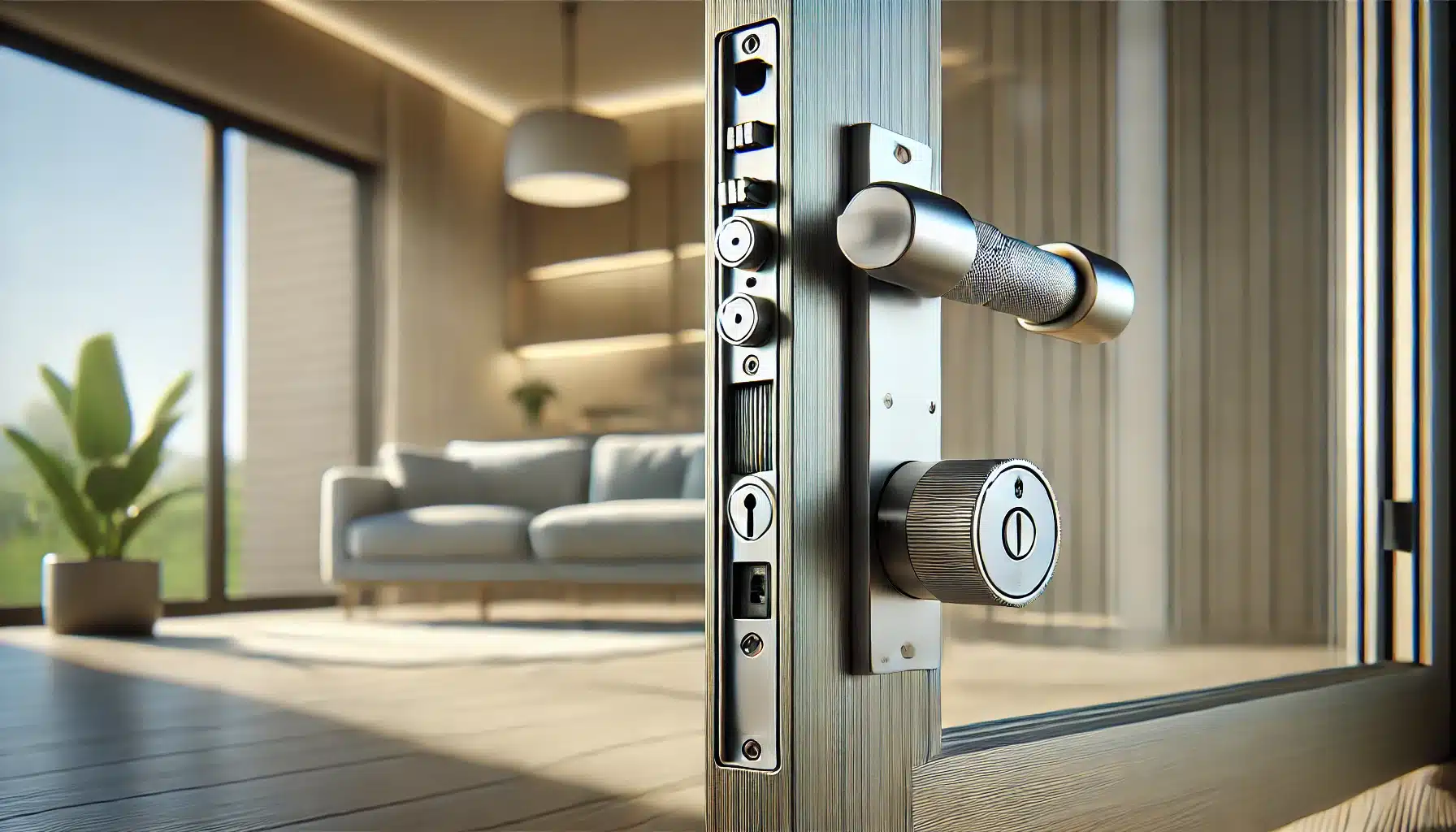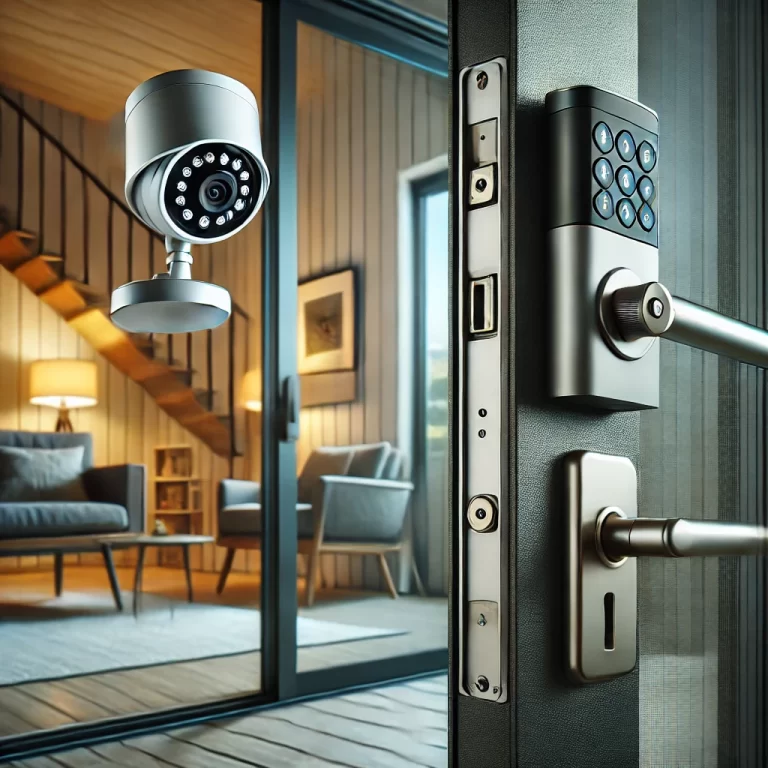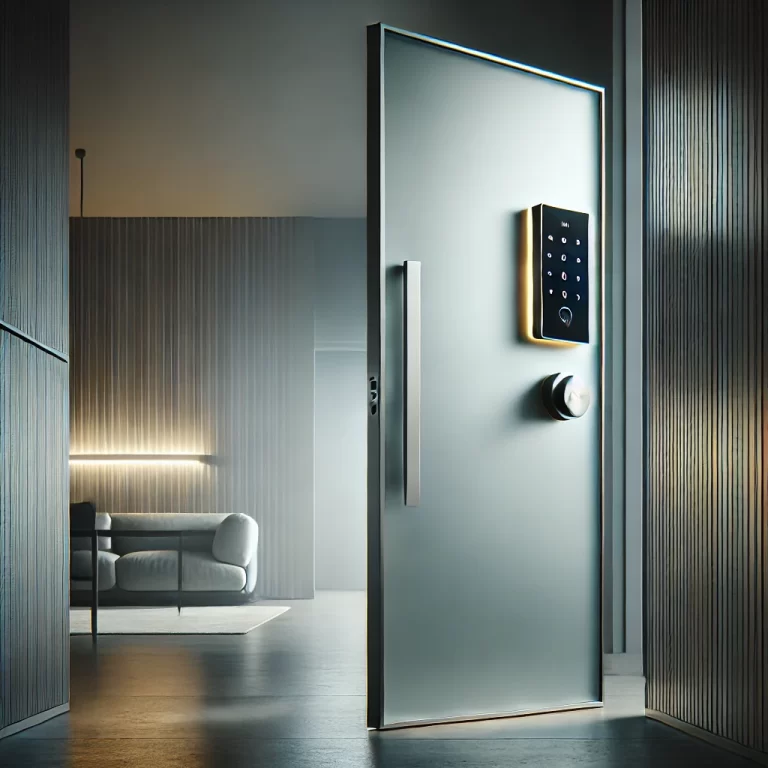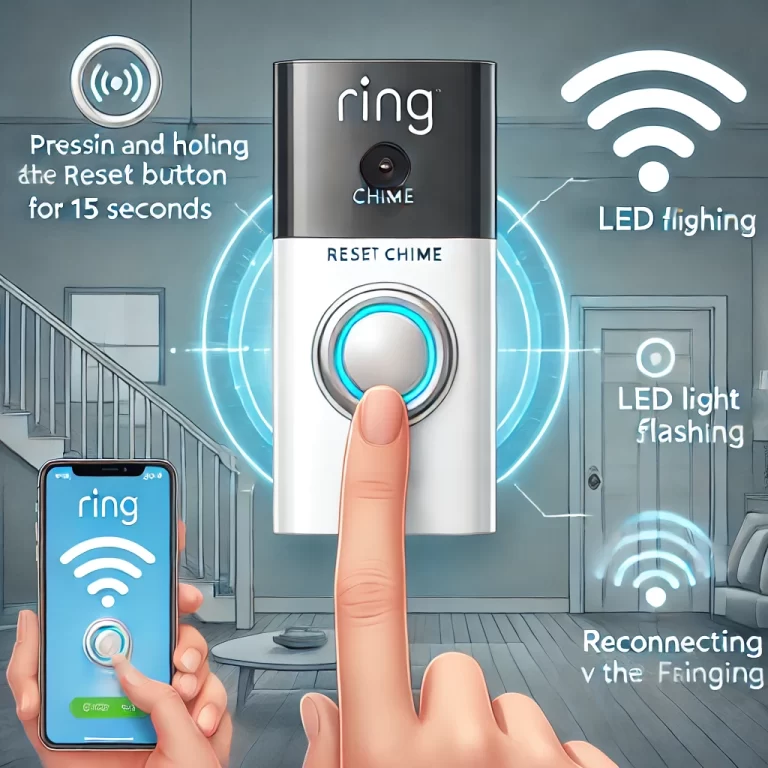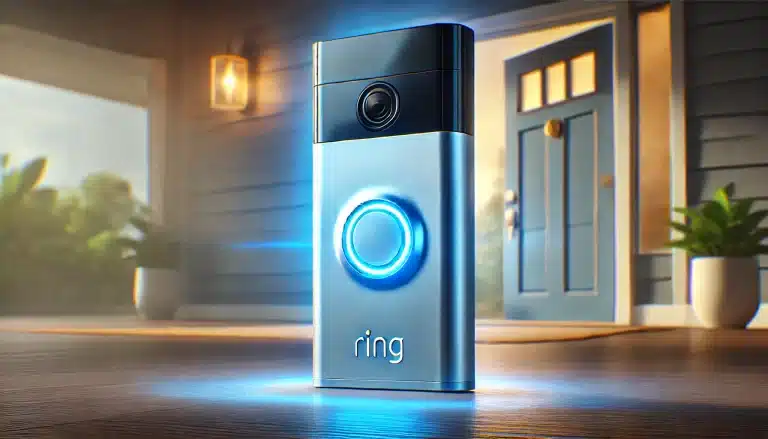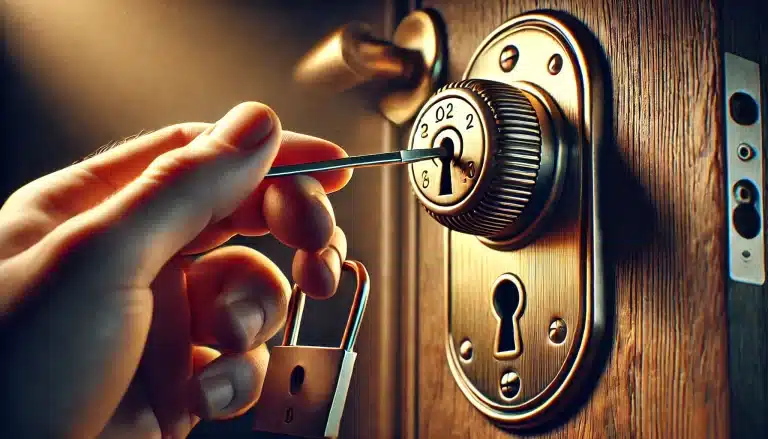Choosing the Right Sliding Glass Door Lock for Enhanced Security
Sliding glass doors are a popular feature in many homes, offering a seamless connection between indoor and outdoor spaces. However, their large glass panels and sliding mechanism can make them an easy target for burglars if not properly secured.
As someone who values both style and safety, I’ve learned that choosing the right lock for your sliding glass door is essential for protecting your home.
In this article, I’ll help you navigate the different types of locks, guide you in selecting the best sliding glass door lock for your needs, and share tips to boost your door’s security. With the right lock in place, you can enjoy both convenience and peace of mind.
What are the Different Types of Sliding Glass Door Locks?
When it comes to securing sliding glass doors, there are several types of locks to choose from, each offering varying levels of security, ease of use, and installation complexity.
I’ve found that understanding the different options helps in selecting the right one for my specific needs. Here’s a breakdown of the most common types:
1. Keyed Locks
Keyed locks are one of the most traditional and secure options for sliding glass doors. They work by using a key to lock or unlock the door, which makes them harder to bypass compared to simple latches. Keyed locks are ideal if you’re looking for added security, especially for doors that lead to outdoor areas or less visible parts of your home.
While they provide strong security, they can be less convenient for quick access. I personally like keyed locks when I’m away from home, as they ensure that only authorized individuals can open the door.
2. Latch Locks (Non-Keyed Locks)
Latch locks are commonly used for sliding glass doors. These locks are engaged by sliding a latch into place, and they don’t require a key to operate. They are easy to use, offering a quick way to secure the door. However, since they can be easily unlocked with just a push or pull, they offer a lower level of security compared to keyed locks.
I typically use latch locks for doors that are in areas with low foot traffic, where high security isn’t as critical but ease of use is.
3. Mortise Locks
Mortise locks are installed within the door frame itself and offer a higher level of security compared to standard latch locks. This type of lock is generally more durable and harder for intruders to tamper with. It’s designed to fit into a specially cut-out pocket, or mortise, in the door, which helps reinforce the door structure.
I find mortise locks to be a great choice when security is a top priority, as they’re difficult to bypass and very reliable.
4. Bolt Locks
Bolt locks are simple but effective. They work by sliding a metal bolt into the door’s frame or strike plate, making it much harder to force the door open. Some bolt locks are installed at the top and bottom of the door, while others are placed in the middle. These locks can be used alone or in conjunction with other types of locks for enhanced security.
I’ve often used bolt locks for additional reinforcement because they’re affordable and provide a solid level of protection.
5. Double Bolt Locks
Double bolt locks are essentially two separate bolts that lock the door from both the top and bottom. They provide an extra layer of security by preventing the door from being lifted off its track or forced open. Double bolt locks are ideal for high-security situations or if you want the extra reassurance that the door is securely locked in place.
For areas that require maximum security, I consider double bolt locks an excellent choice.
6. Slide Bolts
A slide bolt lock is a type of manual lock that is installed on the inside of the sliding door. It secures the door by sliding a metal bolt into place. It’s a simple but effective option to add another layer of security. I often use slide bolts in conjunction with other locks, as they’re easy to operate but aren’t as secure on their own.
7. Smart Locks
With the rise of home automation, smart locks have become an increasingly popular option for sliding glass doors. These locks offer keyless entry through Bluetooth, Wi-Fi, or keypad systems, allowing you to lock and unlock your door remotely from your smartphone or other connected devices. Some models even integrate with other home security systems, providing real-time notifications if the door is tampered with.
For convenience and modern security, I think smart locks are a fantastic option—especially if you like having control over your home security from anywhere.
How Do I Choose the Right Sliding Glass Door Lock?
Choosing the right lock for my sliding glass door isn’t always straightforward. I take into consideration my home’s overall security, the type of door I have, and my specific needs.
Assessing Your Home Security Needs
The first thing I do is assess the security needs of my home. If my sliding glass door is in a secluded area or hard to monitor, I’ll opt for a stronger, more advanced lock. If it’s in a well-lit, high-traffic area, a simple but secure lock might be sufficient.
Factors to Consider When Buying a Patio Door Lock
When buying a patio door lock, I make sure to check the materials and the strength of the lock. I also consider whether the lock is easy for me to operate, especially when I’m in a rush.
How to Determine the Right Type of Lock for Your Door
I match the type of lock to the door itself. For instance, if the door has a track system that allows for easy sliding, I’ll go for a lock that fits snugly within the track, like a bolt lock or a mortise lock. I also check if the lock is compatible with my door’s frame.
What Are the Best Security Tips for Sliding Glass Doors?
There are several ways to enhance the security of my sliding glass doors beyond just the lock itself.
Enhancing Security with a Security Bar
One tip I swear by is adding a security bar or a metal rod in the door’s track. This simple step makes it harder for someone to force open the door, and it provides extra peace of mind when I’m home or away.
Implementing a Home Security System for Sliding Doors
I also recommend integrating my sliding glass doors with a home security system. Modern systems offer sensors that alert me to any unauthorized movement, adding an extra layer of security.
Routine Maintenance Tips for Your Sliding Door Lock
I make it a point to perform routine maintenance on my sliding door locks. Cleaning the track and lubricating the lock mechanism ensures that it works smoothly and effectively every time I use it.
Are Smart Locks a Good Option for Sliding Glass Doors?
As technology advances, smart locks are becoming increasingly popular. I’ve found that these locks offer enhanced security and convenience.
Benefits of Smart Locks for Home Security
Smart locks can be controlled remotely, which is perfect for someone like me who often forgets to lock the door. I can also set temporary access codes for guests, eliminating the need for spare keys.
How Smart Home Technology Enhances Door Security
With smart home technology, I can connect my sliding door lock to my phone or home automation system. This allows me to monitor the status of the lock and receive notifications whenever it’s unlocked or tampered with.
Installation Tips for Smart Sliding Door Locks
Installing a smart door lock on my sliding glass door is simple, especially with a DIY kit. I follow the manufacturer’s instructions carefully, and within an hour, my door is secured with the latest technology.
What Should I Look for in a Sliding Patio Door Lock?
When shopping for a sliding patio door lock, I look for a few key features that ensure reliability and security.
Key Features of a Reliable Sliding Patio Door Lock
I always check if the lock is made from durable materials, is resistant to tampering, and fits securely into the door frame. A lock with an anti-lift design also prevents intruders from lifting the door out of the frame.
Comparing Different Brands and Models
Different brands offer various models with distinct features, so I like to compare options. Some brands specialize in high-security locks, while others focus on ease of use. I make sure to choose the one that best fits my needs.
How Do I Install a Sliding Glass Door Lock?
When it comes to installing a new lock on my sliding glass door, I prefer to do it myself to save on costs.
Step-by-Step Guide to Installing Your New Lock
- First, I remove the old lock by unscrewing it from the frame.
- Next, I align the new lock with the door frame and mark the spots where the screws will go.
- After drilling pilot holes, I secure the new lock in place, ensuring it functions smoothly.
Common Mistakes to Avoid During Installation
One common mistake I avoid is drilling the wrong size holes, which could cause the lock to misalign. I also make sure the lock is tightly secured to prevent it from being easily removed.
When to Call a Professional for Installation
If I feel uncertain about installing the lock correctly or if the door frame is particularly tricky, I don’t hesitate to call a professional locksmith. It’s better to get it right the first time than risk compromising my home’s security.
How to Fix a Sliding Glass Door Lock
Fixing a sliding glass door lock can be straightforward, depending on the issue. Here’s how I approach it:
- Identify the Problem: First, I check if the lock mechanism is stuck or jammed. Sometimes, dirt or debris in the track can prevent the lock from engaging properly.
- Lubricate the Lock: If the lock is sticking, I apply a small amount of graphite-based lubricant to the keyhole and the locking mechanism. This helps loosen up the parts and ensures smooth operation.
- Adjust the Locking Mechanism: If the lock is misaligned, I carefully loosen the screws holding the lock in place. I adjust the position of the lock until it aligns properly with the strike plate or latch. Once it’s aligned, I tighten the screws.
- Replace Broken Components: If any part of the lock is broken, like a broken latch or faulty key mechanism, I replace the damaged component. Most sliding glass door locks come with replacement parts that can be purchased from a hardware store.
- Test the Lock: After the fix, I test the lock to make sure it works smoothly. If it’s still not functioning properly, it might be time to replace the entire lock.
How to Lock a Sliding Glass Door
Locking a sliding glass door is simple, but it’s important to do it securely to prevent any break-ins. Here’s my method:
- Close the Door Fully: I make sure the sliding glass door is fully closed before attempting to lock it. Sometimes, the door can be slightly ajar, which could prevent the lock from engaging properly.
- Engage the Locking Mechanism: Most sliding glass doors have a locking lever or latch located on the handle. I slide it into place, ensuring the bolt or latch fully extends into the frame or strike plate.
- Double Check the Lock: For added security, I sometimes double-check the lock by gently tugging on the handle to ensure it’s securely fastened.
- Use a Security Bar (Optional): As an extra layer of security, I often place a security bar or rod in the door’s track. This prevents the door from being opened even if someone manages to tamper with the lock.
How to Open a Locked Sliding Glass Door
If I find myself locked out of my sliding glass door, there are a few things I can do:
- Check the Locking Mechanism: I check the door to see if it’s truly locked. Sometimes, it might only be partially latched, making it easy to open.
- Use the Key: If the door has a keyed lock, I insert the key into the lock and turn it to unlock it. It’s important to make sure the key is turned fully so the lock mechanism disengages.
- Use the Inside Handle (For Internal Locks): Many sliding glass doors have a lock on the inside, which can be accessed without a key. I can unlock it by pulling or pushing the internal handle to disengage the lock.
- Unlock the Door from the Track: If the door is stuck in the track, I can gently lift the door while unlocking the latch to ease the pressure. If it’s difficult to move, applying some lubricant to the track can help loosen it.
- Call a Locksmith: If none of the above work and the door remains stuck or locked, I might need to contact a professional locksmith to safely open the door without damaging the lock.
How to Replace the Lock on a Sliding Glass Door
If the lock on my sliding glass door is broken beyond repair or I just want to upgrade to a better model, replacing it is a simple process:
- Remove the Old Lock: I start by removing the screws that hold the lock in place. Depending on the design, the lock may slide out of the track or come apart once the screws are loosened.
- Select a New Lock: I choose a new lock that fits the dimensions of my door. Mortise locks, keyed locks, and bolt locks are all great options. I make sure to select a lock that provides the right level of security for my needs.
- Install the New Lock: Once I have the new lock, I position it where the old lock was located. I then screw it in securely, ensuring that the lock fits snugly and operates smoothly.
- Test the New Lock: After installation, I test the lock to make sure it works properly. I check the sliding door for any alignment issues and ensure that the locking mechanism engages fully.
- Make Final Adjustments: If the lock feels loose or the door isn’t sliding properly, I may need to adjust the lock placement slightly. A simple adjustment to the latch or strike plate can improve the functionality.
Frequently Asked Questions (FAQs)
- What is the most secure type of lock for a sliding glass door? The most secure types of locks for sliding glass doors are mortise locks and high-quality bolt locks. They provide strong security and are difficult for intruders to tamper with. A security bar added to the door track can also enhance security.
- Can a sliding glass door lock be bypassed easily? Unfortunately, older or cheaper sliding glass door locks can sometimes be bypassed easily by burglars. It’s important to invest in a high-quality lock and consider additional security features, like a security bar or a home security system.
- Do sliding glass doors come with locks by default? Most sliding glass doors come with a basic lock system, but the security level may vary. It’s often recommended to upgrade the lock for better protection, especially if your door is older or the lock seems flimsy.
- How do I choose between a keyed lock and a non-keyed lock? If you prefer the convenience of using a key, a keyed lock is a solid choice. If you’re looking for something easier to operate, a non-keyed or push-button lock might be better. Consider your preferences for security and ease of use.
- Are smart locks a good choice for sliding glass doors? Yes, smart locks offer convenience and security by allowing you to control access to your door remotely. Some models even integrate with home automation systems, offering enhanced security features like notifications and automatic locking.
- How do I maintain my sliding glass door lock? Regularly lubricating the lock mechanism with a graphite-based lubricant can help keep it functioning smoothly. Check the lock for any signs of wear and tear, and replace it if necessary. Also, keep the tracks clean to ensure smooth operation.
- Can I install a sliding glass door lock myself? Yes, installing a sliding glass door lock is a DIY-friendly task, especially if you choose a simple bolt lock or keyed lock. However, if you’re opting for a more complex system, such as a mortise lock or smart lock, you might want to consider professional installation.
- What’s the best way to secure a sliding glass door at night? Apart from locking the door, I recommend using a security bar or rod in the track. This adds an extra layer of protection and makes it harder for anyone to force the door open.
- What should I do if my sliding glass door lock is broken? If your sliding glass door lock is broken, it’s essential to replace it as soon as possible to maintain security. If the lock is beyond repair, consider upgrading to a more secure option like a mortise or bolt lock.
- Are there any sliding glass door locks that can be keyed alike? Yes, many manufacturers offer sliding glass door locks that can be keyed alike. This allows you to use a single key for multiple locks in your home, which is convenient and adds to your overall security.

